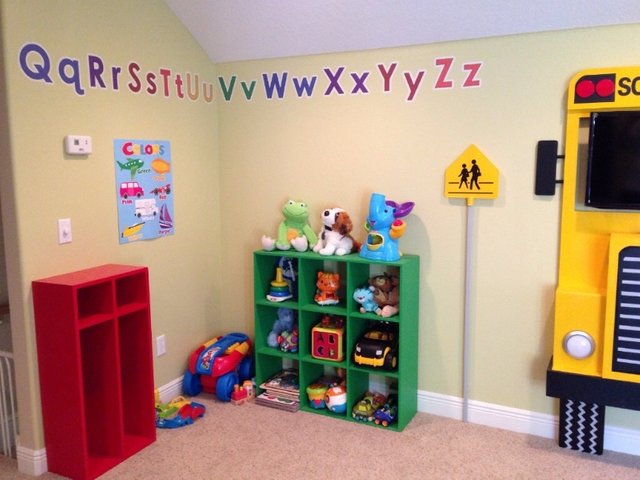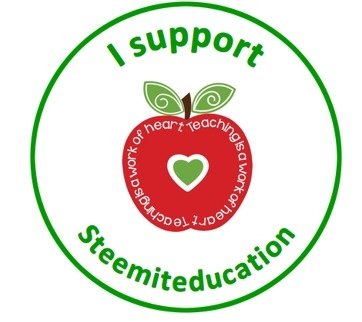...and we kick off right where we left off yesterday with more great tips for first time teachers.
If you missed it yesterday, we touched on our first few tips on how to react in classroom situations with a positive attitude if you are a brand new teacher. Read more here.
We asked our readers to give feedback on Part 1 and tell us if they have implemented these tips in their own classrooms and how it worked out. Here is one of our reader's response:
" I totally agree that being a first time teacher can be stressful. A lot of firsts happening simultaneously. Tried your methods especially the rewards chart. Its very motivating to the students."
Let's have a peek at what Part 2 can teach us about behavioural management of children in your classroom.
- Structure -
Try and make a structure chart to form a certain routine during class time. Children tend to respond quite well to a set routine on a daily or weekly basis.
This also assists with the discipline factor. The child will get use to the structure and will know that should they deviate from it, there will be consequences. Also remember to inform the children, in advance, if there may be a change in the routine. Let them become comfortable with the idea of slight change instead of just changing it.
- Volume control -
This could be somewhat challenging, especially if the children do not catch on to what you are trying to do. When the class gets loud and noisy, speak softly when asking a question or giving an instruction. This could turn into a game, where the children have to be really quiet in order to figure out what you are saying. The first few times you might struggle with this, but it works really well once you get a handle on it.
- "Chill out time" -
As we all know, children can get frustrated from time to time. They may need some time to calm down or "chill out" as I call it. Try and make a quiet corner in your classroom with a fun book, some clay or blocks. Anything that could assist in calming down an upset or hyper child. It could at times only be one child that can disrupt the entire classroom rhythm. Should you have a rewards system in your class then this could work hand in hand with that.
Before punishing the child straight of the bat, tell them to move to the "chill corner" or "chill zone" to cool off and regain focus. Don't leave them there alone for too long as this might be confused for free time in class. You can maybe have them write out 10 sentences of what not to do in class before letting them play with the books, clay or blocks for 2 minutes.



Please consider writing under the steemiteducation tag. Please see their latest post for the new criteria. Please consider telling your friends and help to promote this account. They are looking for good quality educational posts. It is not only for educators, anyone is welcome. Just read the latest post and join their discord server. Make sure to drop your links in the steemiteducation post promotion section on discord.


Nice
Downvoting a post can decrease pending rewards and make it less visible. Common reasons:
Submit
hey! glad my reply made it to your post. :) your pieces of advice are sound and helpful to newbies. the best and the hardest really is setting a structure and building a routine. its a challenge to make it sound fun and not setting up rigid rules that needs to be followed. thekey is consistency - which is the most difficult. keep writing.
Downvoting a post can decrease pending rewards and make it less visible. Common reasons:
Submit
Thank you so much for your positive feedback, I look forward to your feedback on Part 3 that will be posted tomorrow. Just keep on doing the great work you're doing!!
Downvoting a post can decrease pending rewards and make it less visible. Common reasons:
Submit
Enjoy reading your posts - keep it up
Downvoting a post can decrease pending rewards and make it less visible. Common reasons:
Submit
Thank you for the support :)
Downvoting a post can decrease pending rewards and make it less visible. Common reasons:
Submit
Love this chill zone instead of naughty chair and best punishment is always wrote something for X time. This way they don't feel humiliated and writing also helps them save that message into their subconscious!!!
Downvoting a post can decrease pending rewards and make it less visible. Common reasons:
Submit
Thank you for the positive feedback :) It's so true and important to rather create a positive environment than punishing or humiliating the child.
Please keep an eye out for our third part of this post.
Downvoting a post can decrease pending rewards and make it less visible. Common reasons:
Submit
Looking forward :)
Downvoting a post can decrease pending rewards and make it less visible. Common reasons:
Submit
Great post, I know some teachers that could learn from this. Sometimes it can make all the difference with a difficult student to just have a little more structure in the classroom. -@bozz
Downvoting a post can decrease pending rewards and make it less visible. Common reasons:
Submit
So true! Thank you for the support :)
Downvoting a post can decrease pending rewards and make it less visible. Common reasons:
Submit